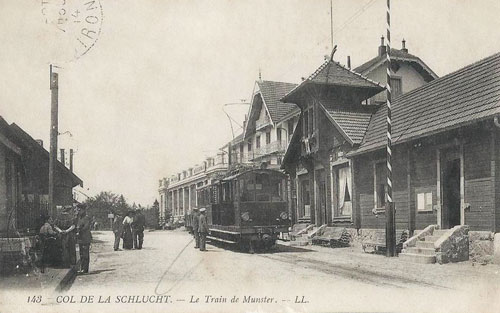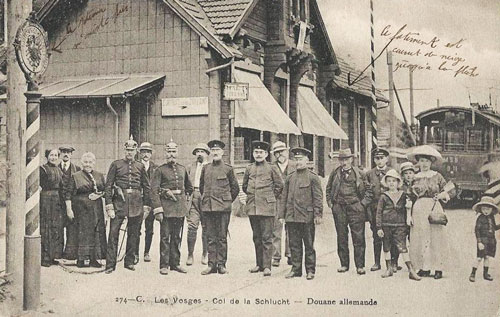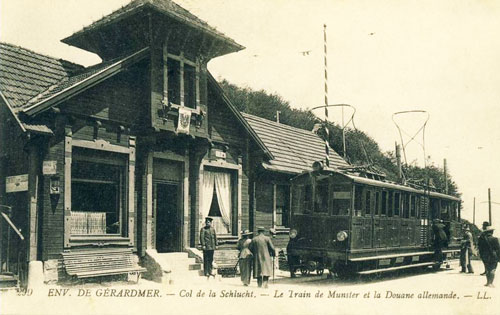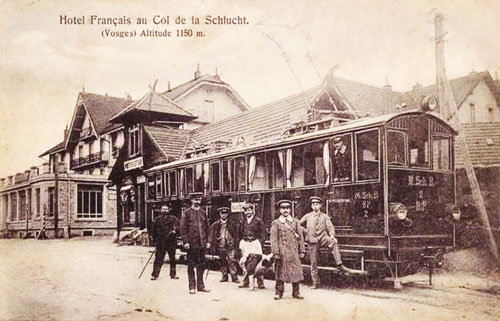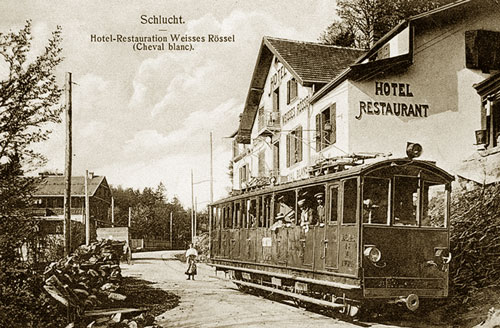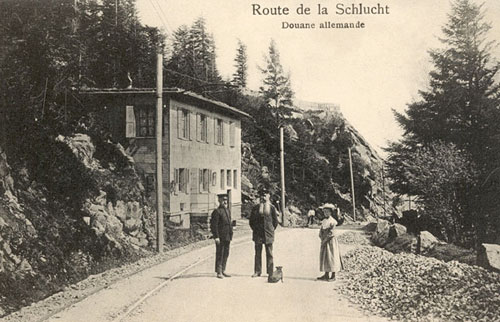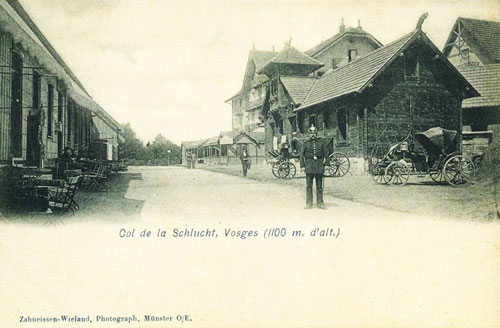|
|
|
| |
Funiculaires de France
Each image links to a larger copy which opens in a
new window/tab
This
page is still under construction
|
|
|
This page is one of a series showing images and
postcards of French funiculars and other mountain, rack & cliff railways.
|
|
|
Funiculaires de France
Each image links to a larger copy which opens in a
new window/tab
This
page is still under construction
Funiculaire de Beauregard-Bregille - Besançon
The Funiculaire Beauregard-Bregille , commonly called
the Bregille Funiculaire is a funicular railway and tramway located in
Besançon in the French department of Doubs. In 1899 Emile Picard proposed a
line linking the top and bottom of the hill Bregille for guests of the spa
of Besançon-les-Bains and to provide easy access to wood and green spaces in
the city. However the funicular was not operational until 1912. The line ran
until 1987 despite numerous financial problems occurred throughout its
history, but a technical malfunction put an end to the activity of the
funicular. The line was added to the Inventory of Historic Monuments on
January 27th, 2011 and is currently the subject of a restoration project,
led by an association in partnership with the city of Besançon.
The term "Besançon-les-Bains" was used to refer to a period during which
Besançon was a popular tourist destination in the
19th Century. In 1891 , the Compagnie des Bains Mouillère de Saline
was created, and tourism developed around the spa, the Hotel des Bains, a
casino, the the Kursaal auditorium
Postcards showing the Funiculaire Beauregard-Bregille
in Besançon-les-Bains
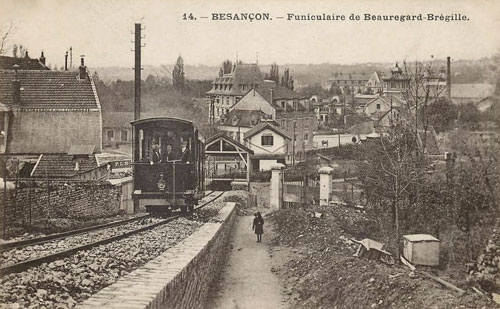

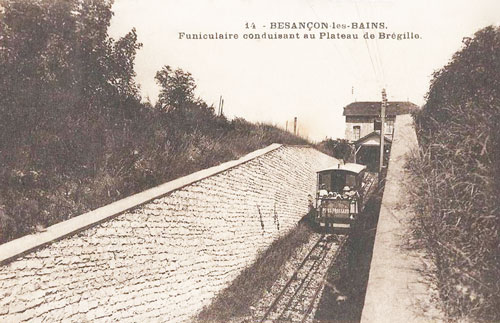
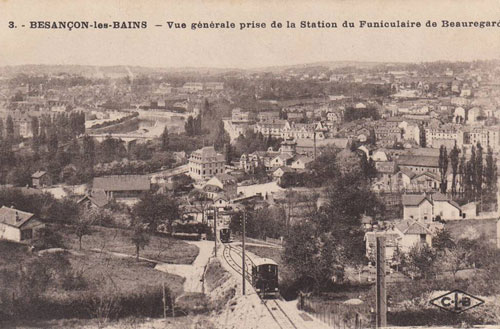
Cap Ferrat - Grand Hotel Funiculaire
The Grand Hotel du Cap Ferrat was built in 1908. It
is located between Nice and Monaco in Provence on the Mediterranean coast. A
private funicular was built in 1927 linking the swimming pool with the hotel
terrace level. It was rebuilt in 1967 with a new car - just one, since it
always worked on a counterbalance system.
Aerial postcards of the Grand Hotel du Cap-Ferrat
showing the line of the funicular between hotel and swimming pool
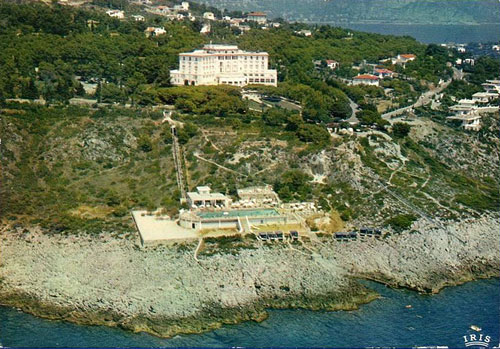
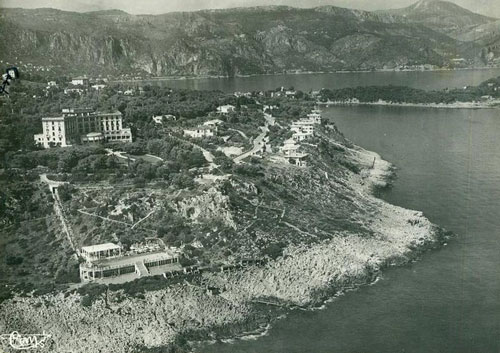
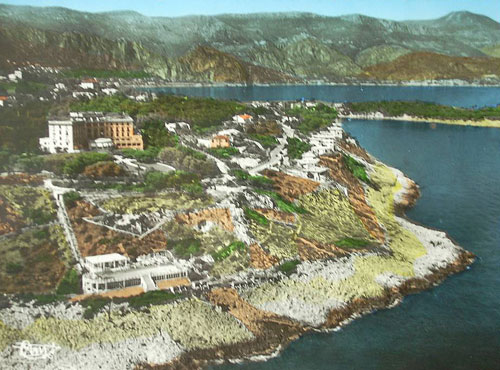
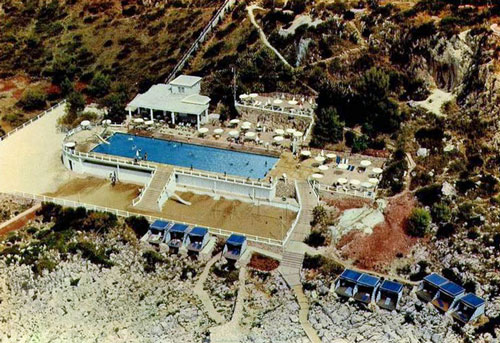
Aerial postcards of the Grand Hotel du Cap-Ferrat
showing the top the funicular bottom left
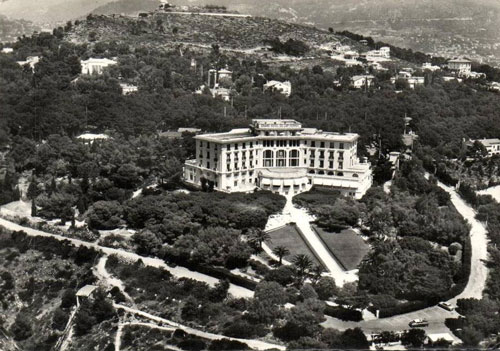
Aerial postcards of the Grand Hotel du Cap-Ferrat
before the funicular was built
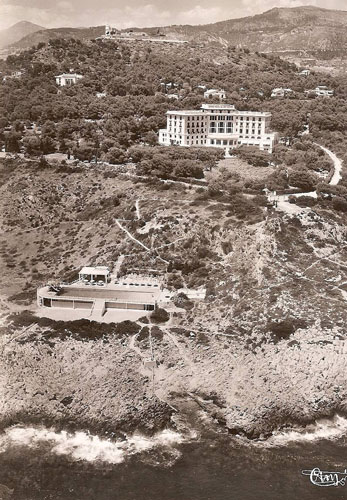
Recent images of the new Grand Hotel du Cap-Ferrat
before
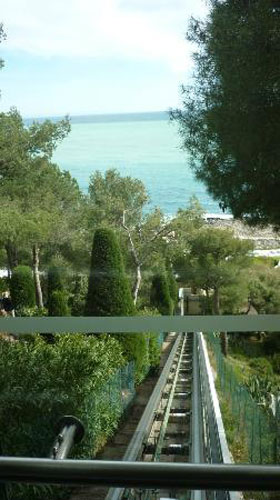
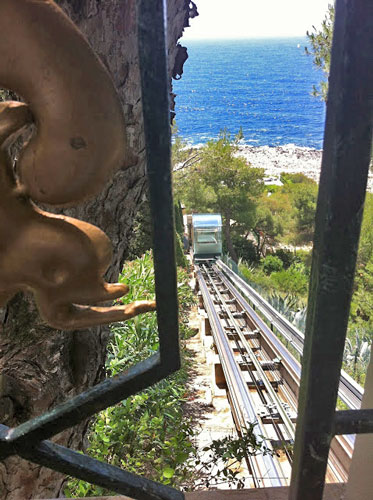
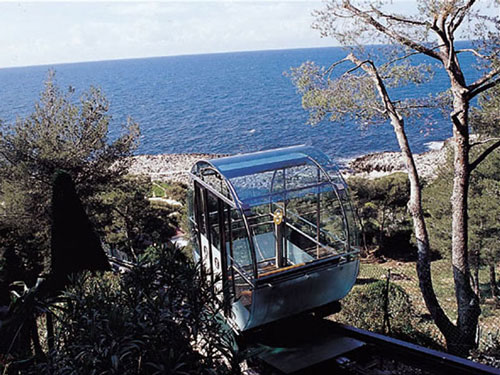
Postcards of the original funiculaire at Le Havre
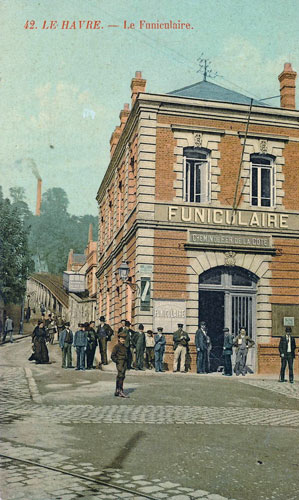
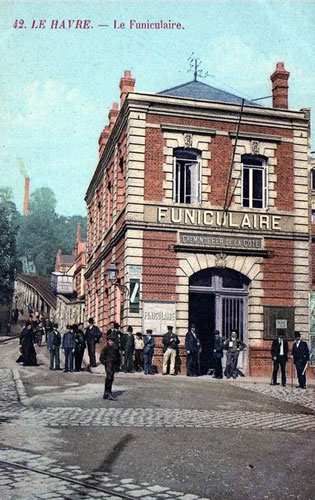
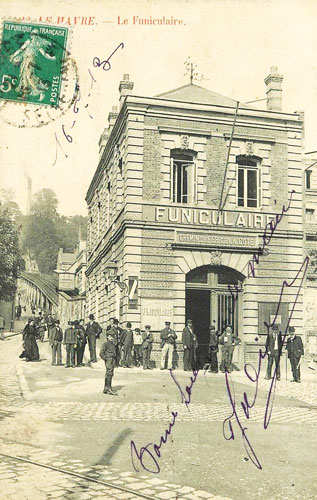
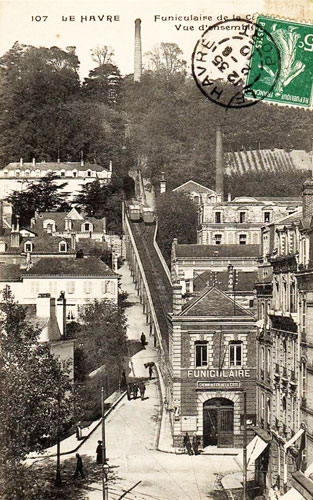
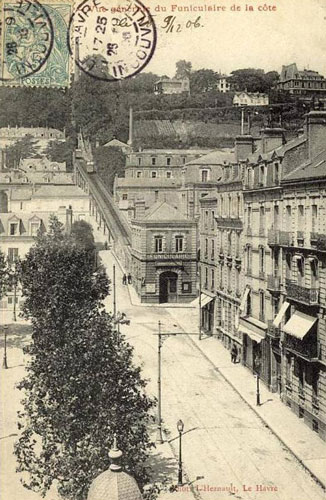
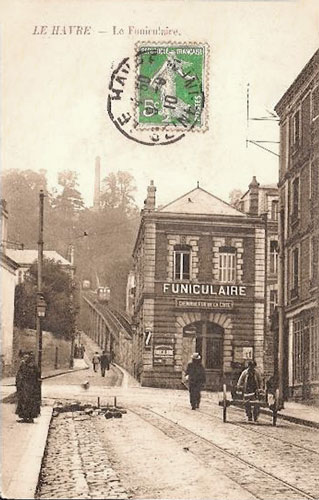
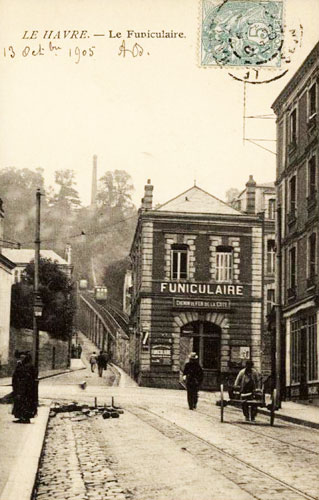
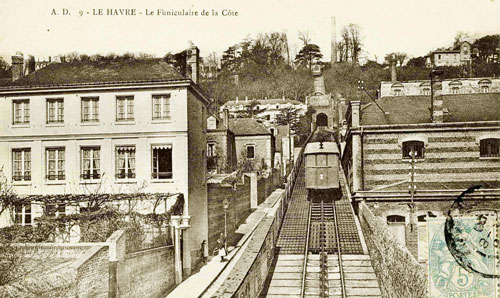

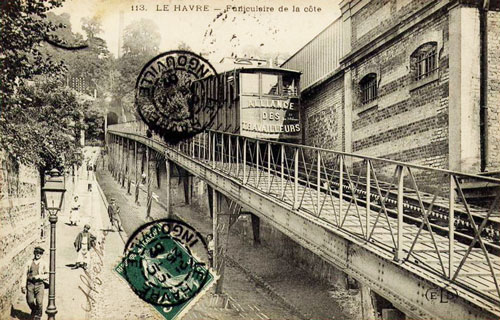
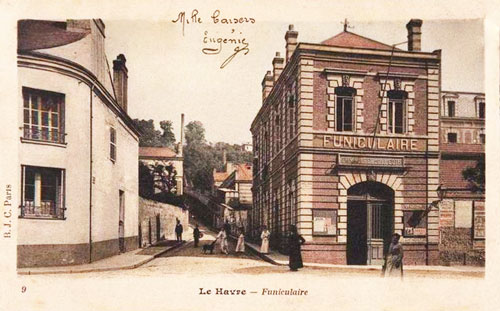
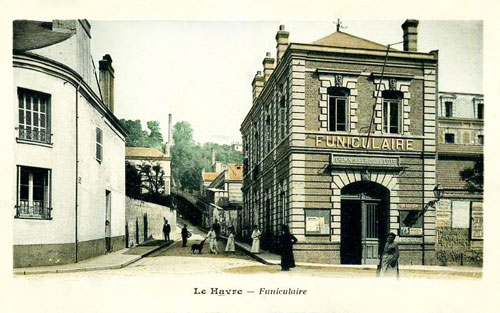
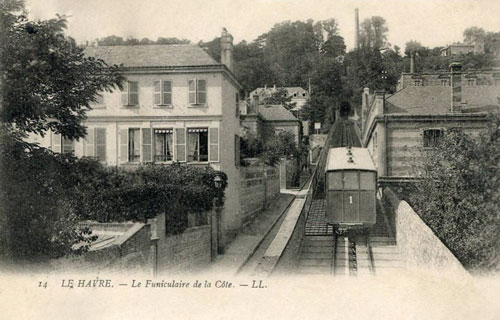
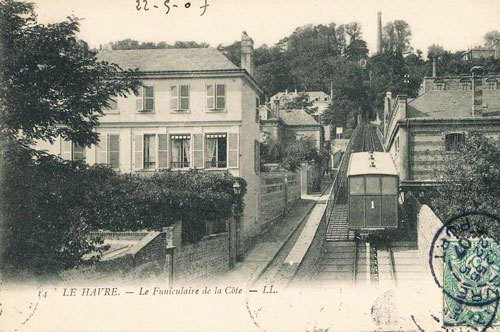
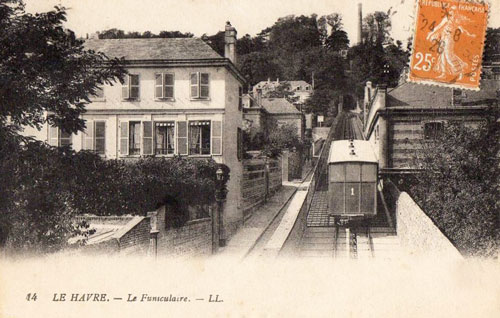

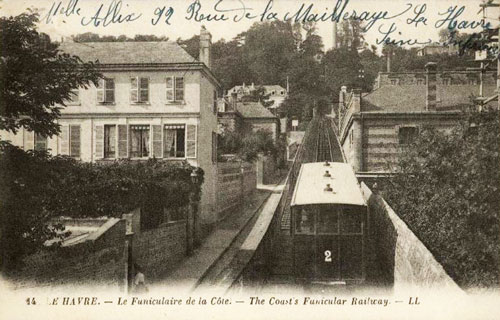
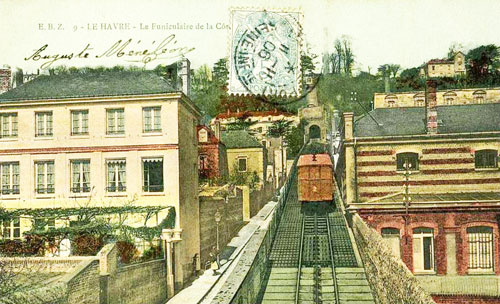
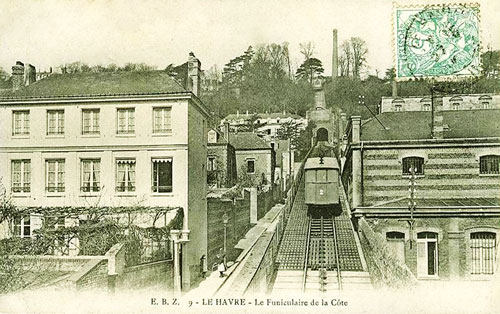
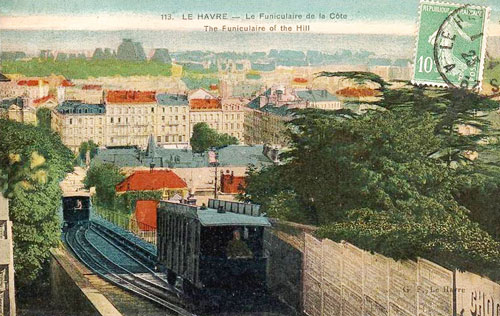
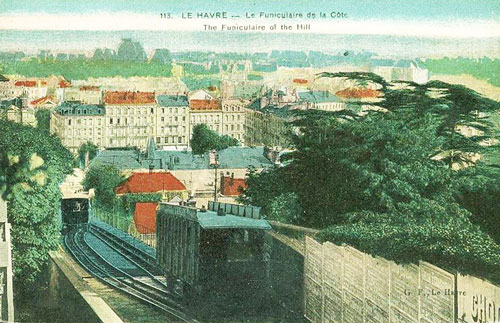
Le Havre rubber-tyred funiculaire in 2012
Photo: © Ian Boyle, 3rd May 2012
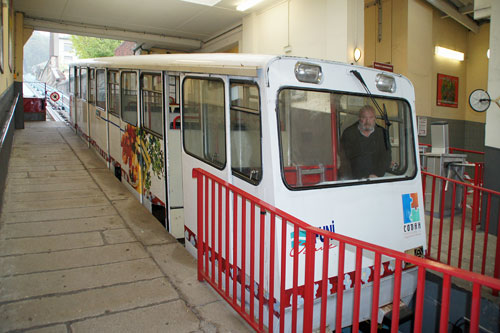
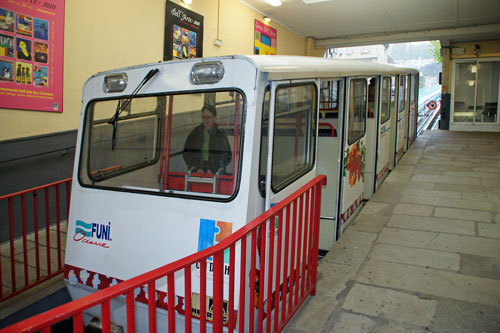
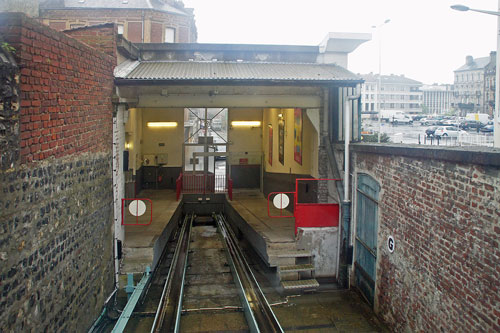
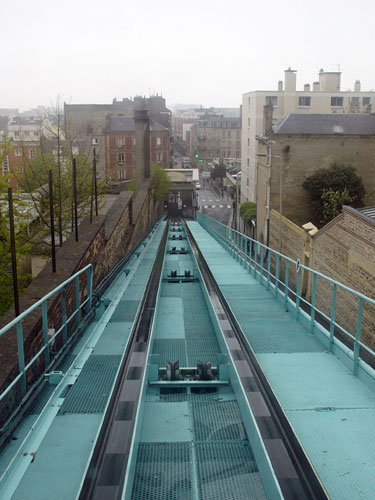
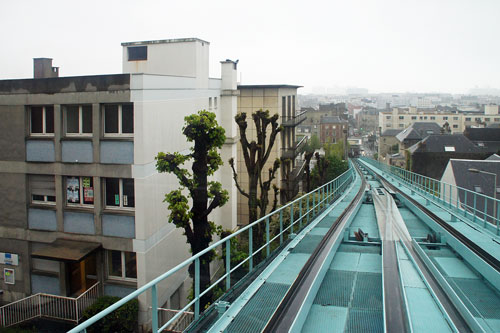
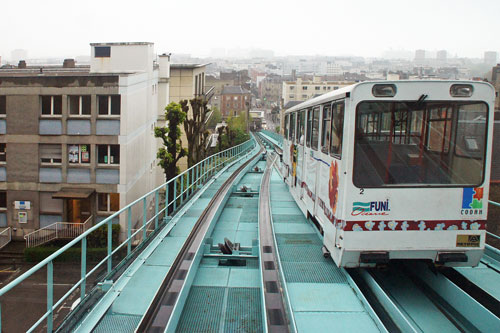
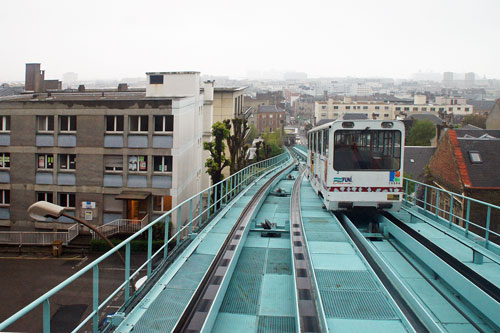

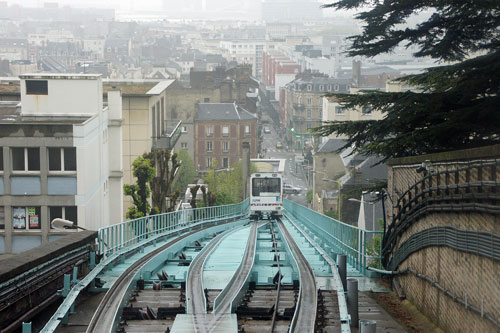
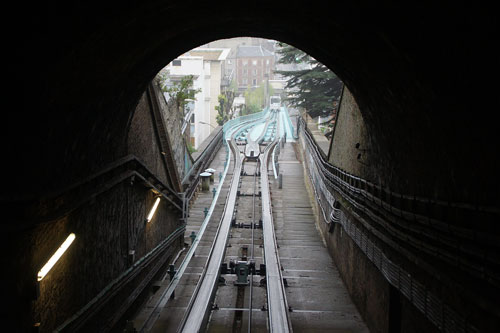
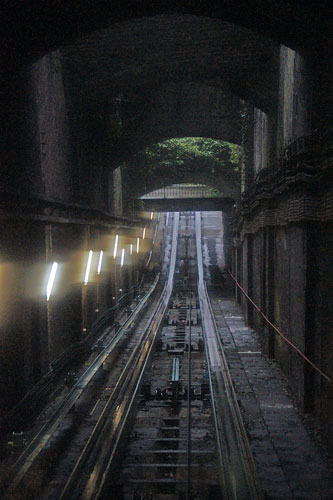
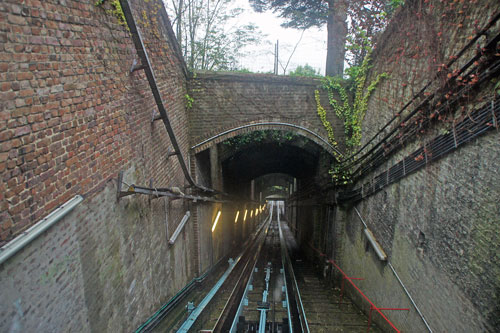
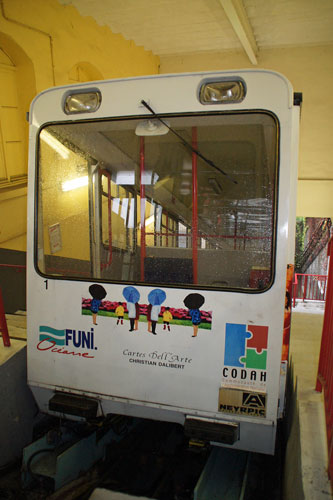
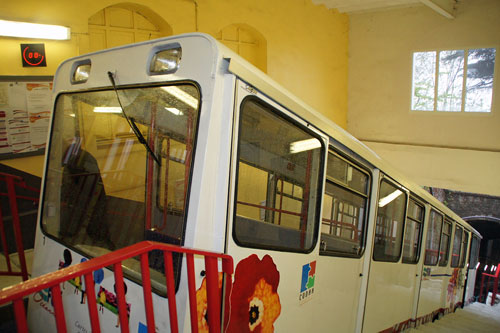
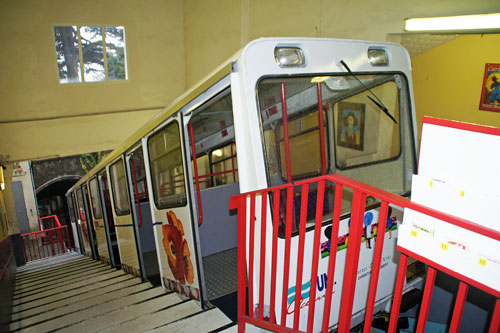
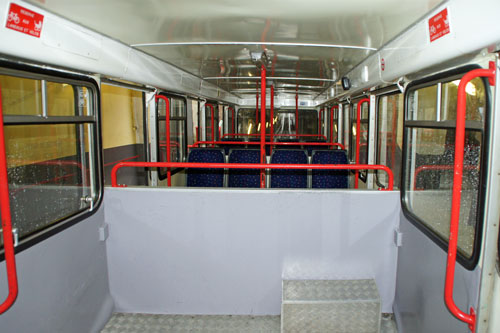
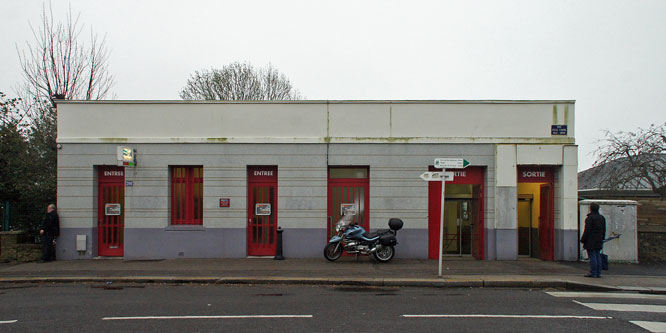
Tramway de Munster à La
Schlucht - Crémaillère
The Tramway de Munster à la Schlucht was an
electrified metre-gauge rack-railway located in the annexed area of
Alsace-Lorraine (Elsaß-Lothringen (EL) in German), linking the town of
Munster with the French border at Schlucht. It operated between 1907 and
1914 during which period the territory was always in German hands, not
reverting to France in 1918. The railway was not reopened after the war.
Despite being a German company throughout its existence, the railway appears
in all French books about narrow gauge railways, presumably because this was
always considered to be a disputed territory. I have therefore included it
on this French page.
There was already a French metre-gauge line to Col de la Schlucht from
Gérardmer, known as the Tramway de Gérardmer. This was partially steam
operated but eventually all electrified. Since this was an adhesion railway
it will covered on another page. The French and German lines were not
connected at the border.
On the 2th5 May 1905, a concession was issued for the building of the
Elektrizität und Bahngesellschaft Münster-Schlucht, also known as the
Münsterschluchtbahn. The line was built as a metre-gauge electric
tramway with both adhesion sections and a Strub rack section. The overall
length was 10.8km but I have not found a reference giving the length of the
rack section between Grossmatt and Altenberg with a maximum gradient of 220
mm/m.
Rolling stock consisted of three rack/adhesion railcars numbered BP1-3.
There was also a smaller adhesion-only tram for use on the lower adhesion
section numbered B4. Three trailers and two goods wagons completed the
rolling stock, which was built by Alioth and SLM-Winterthur. The line was
electrified at 750V DC, produced at their own generator at 7000V - 50 Hz and
fed to a transformer by the rack section.
The line opened on 16th May 1907, running in the summer months only on the
upper section, the winter service being limited to the lower part between
Munster and Ampfersbach or if necessary to Schmeltzwasen and Grossmatt . In
summer, nine trips were programmed maximum, Sundays and holidays, with two
trains crossing at half way. The total trip took an hour.
Public services were discontinued at the beginning of hostilities in 1914
and much of the infrastructure destroyed was during the war . It was never
rebuilt. Only the upper part of the route between Schlucht and Altenberg was
used during the war by French military engineers, who built a connection
across the erstwhile border to connect with the Tramway de Gérardmer at
Schlucht.
Postcards Map o Munster and la Schlucht before the
tramway was built
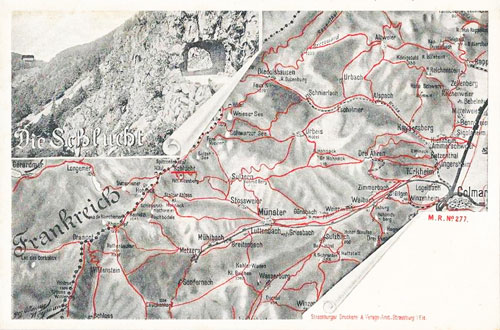
Postcards of the Tramway de Munster à la Schlucht at
Munster
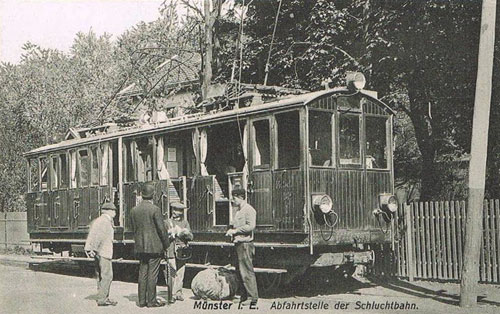
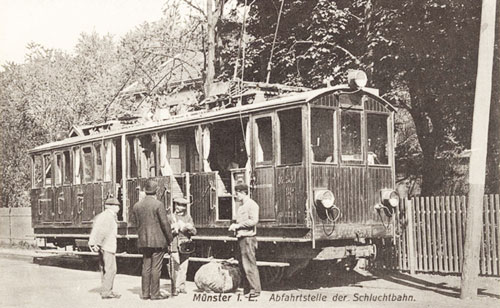
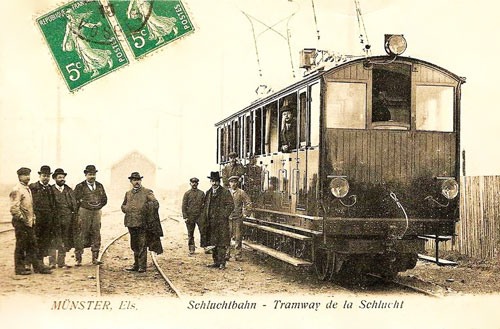
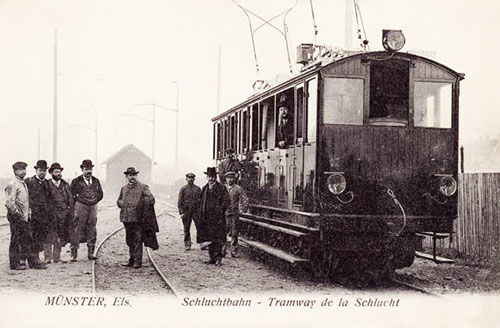
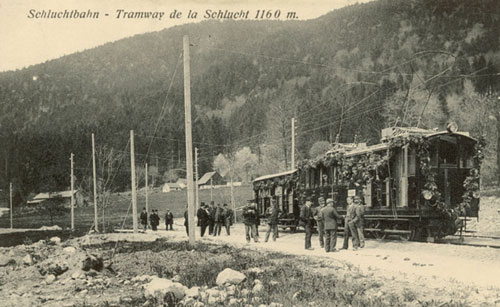
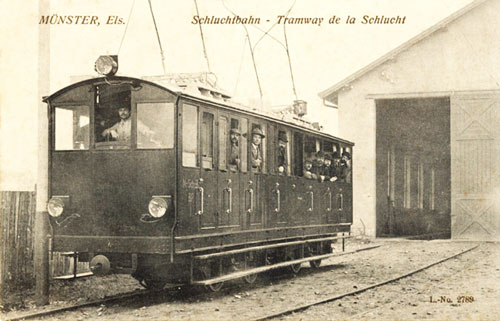
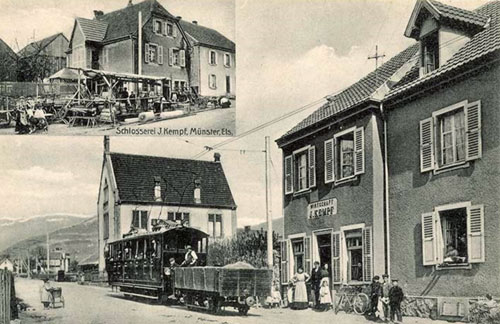
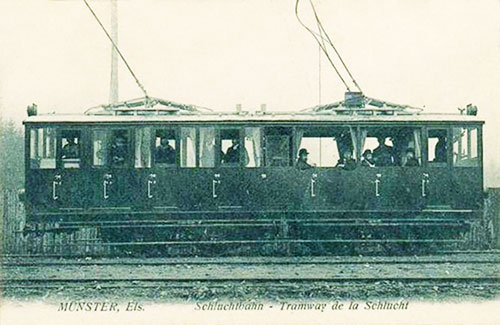
Postcards of the Tramway de Munster à la Schlucht at
Altenberg on the rack section
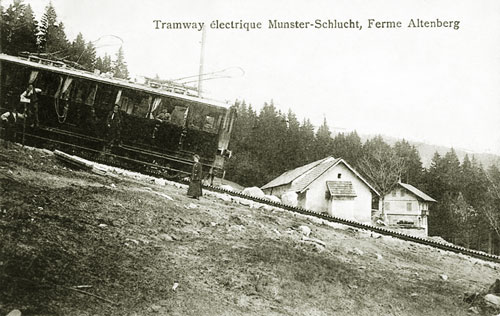
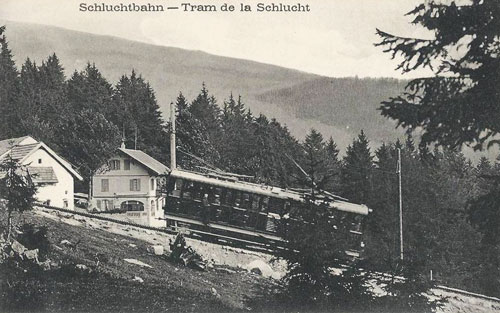
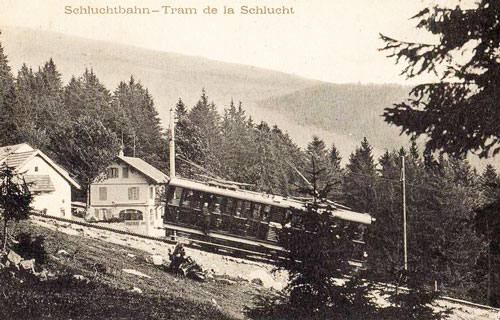
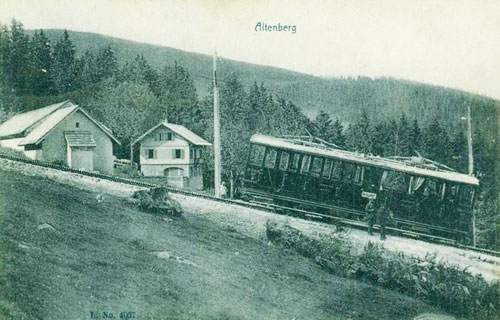
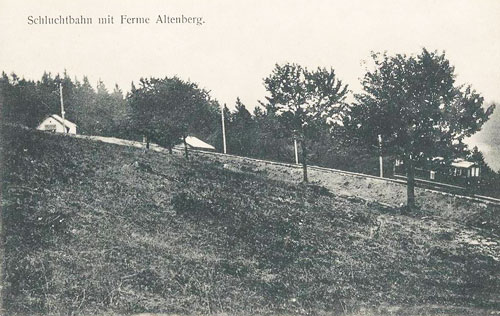

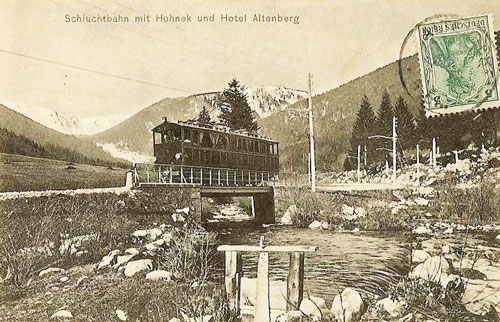
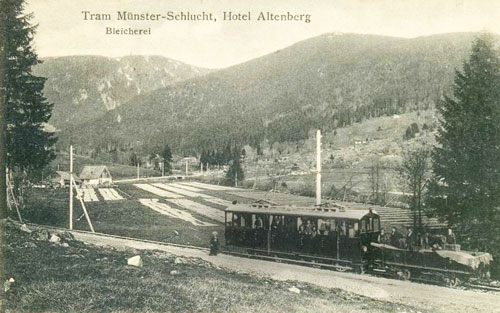
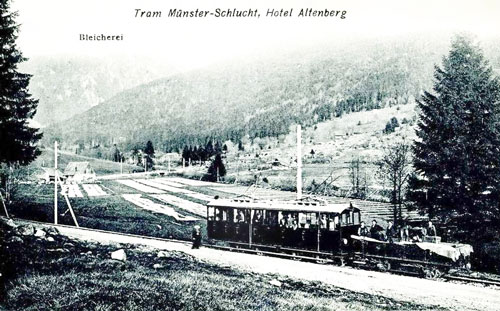
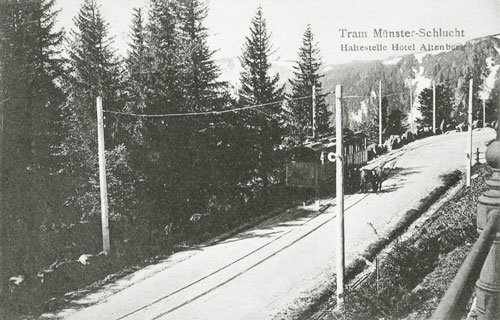
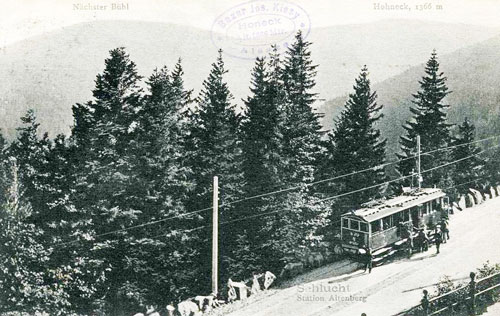

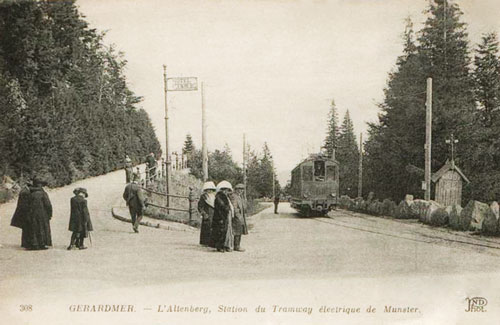
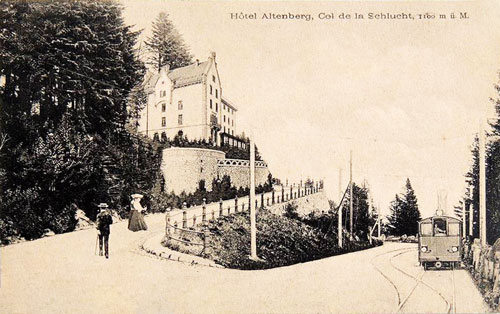
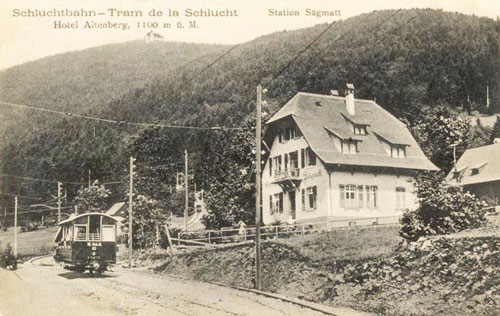
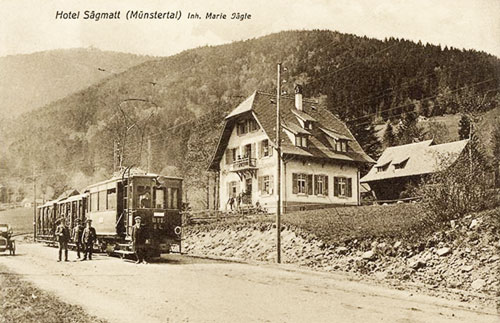
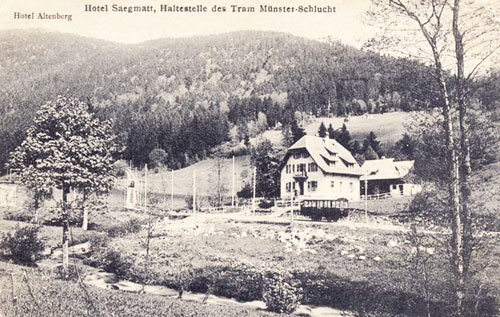
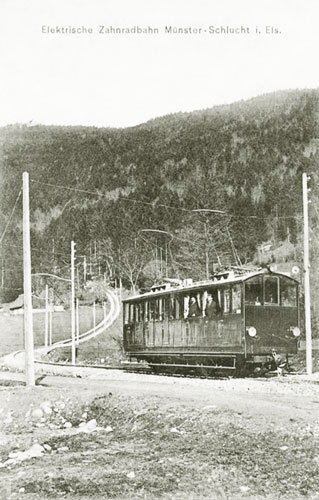
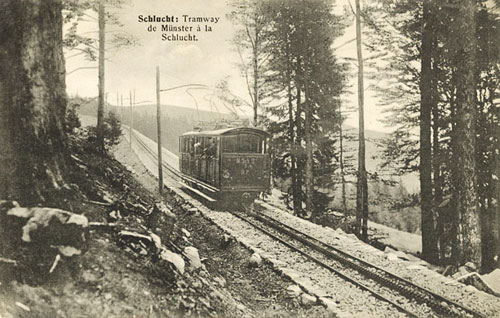
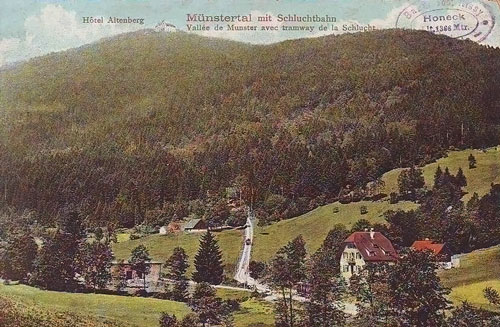
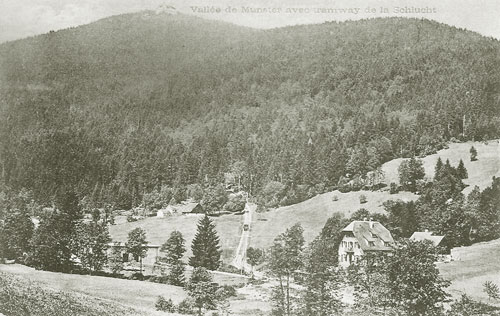
Postcards of the Schlucht Tunnel before the tramway
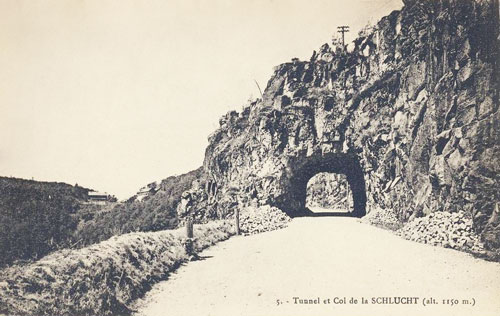
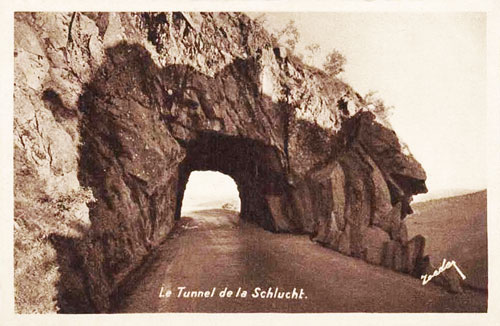
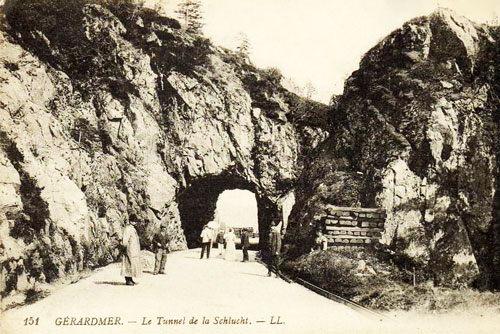
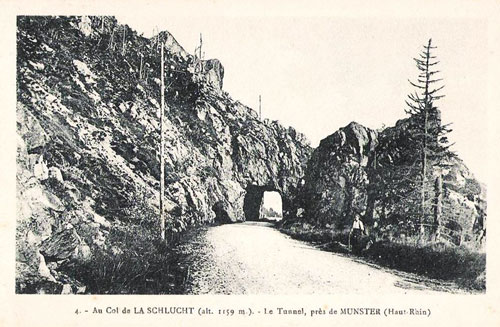
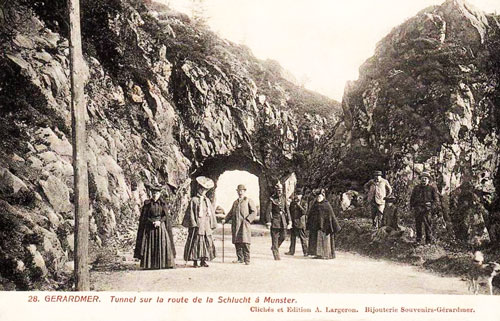
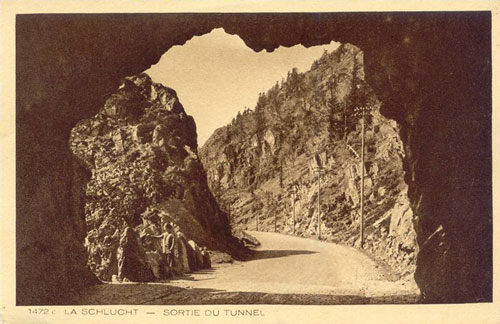
Faked postcards of the Schlucht Tunnel with the
tramway
Since the postcard publishers already had many
pictures of the tunnel, when the tramway arrived they simply faked in a tram
on their existing cards, usually very badly
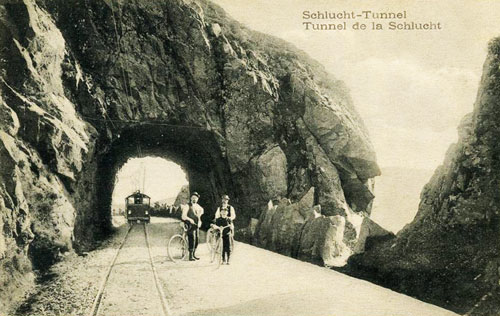
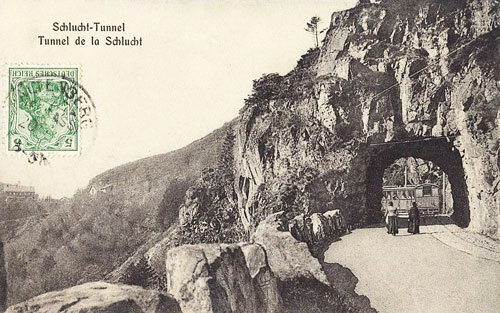

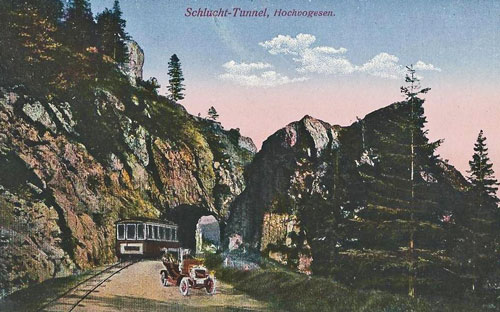
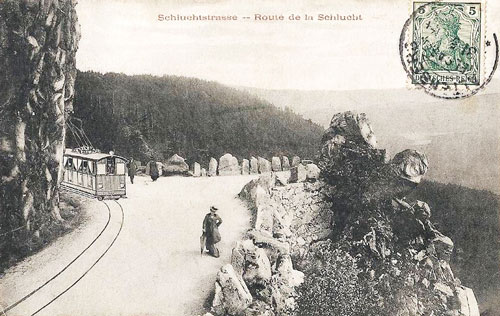
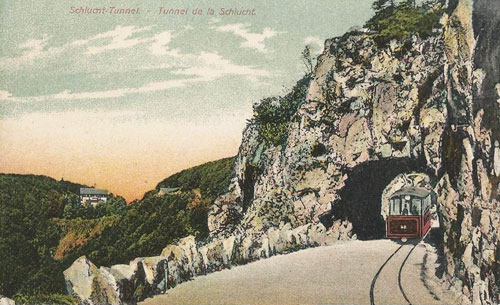
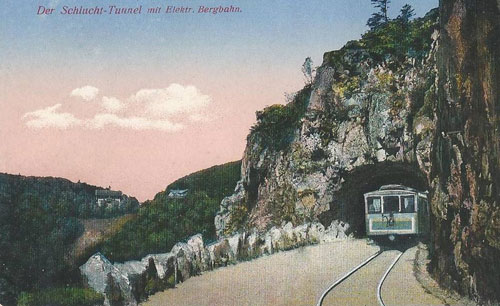
Postcards of the Schlucht Tunnel with the tramway
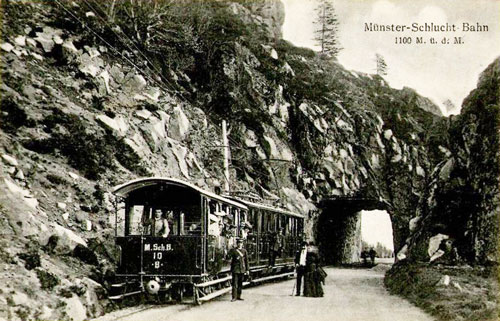

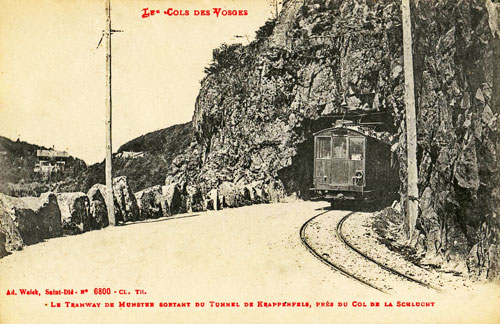
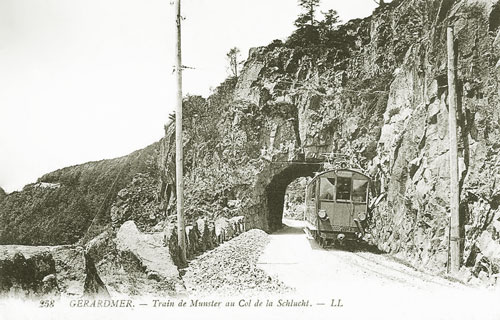
Postcards of the Tramway de Munster à la Schlucht
approaching a Schlucht
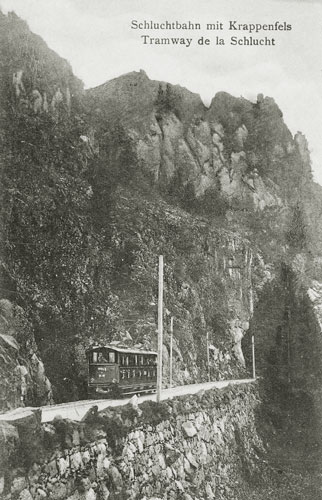
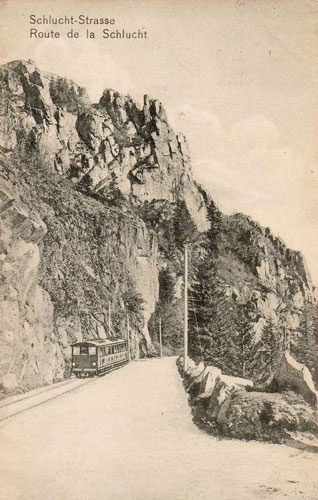
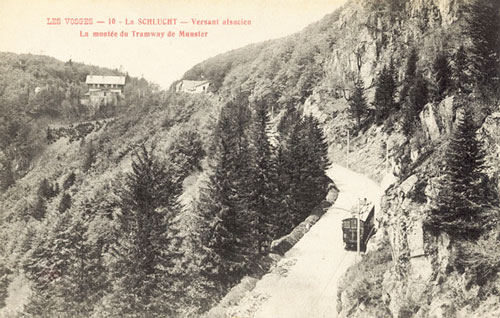
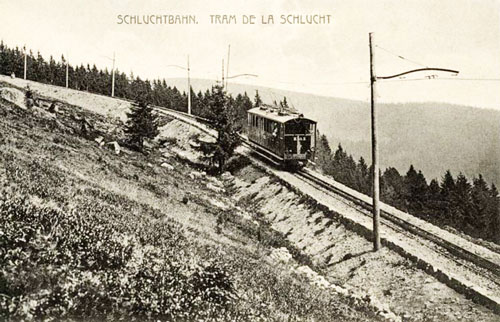
Postcards of the Schlucht Tunnel after the closure of
the tramway
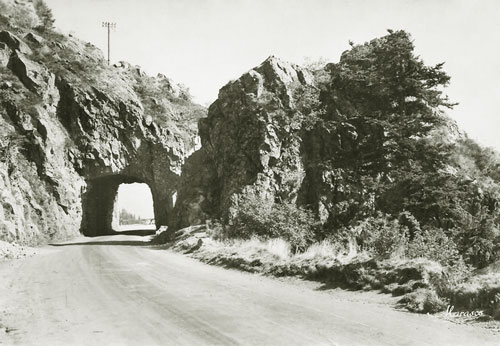
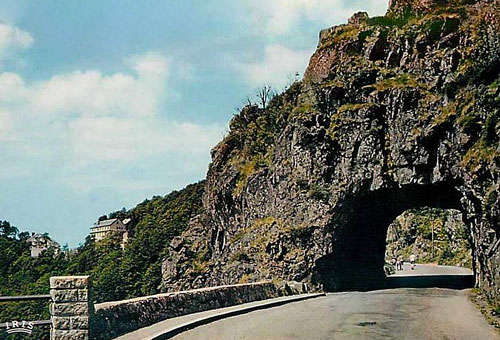
Postcards of the Tramway de Munster à la Schlucht at
Col de la Schlucht
